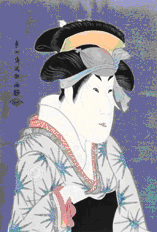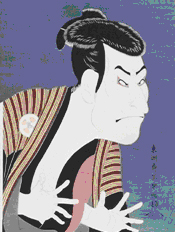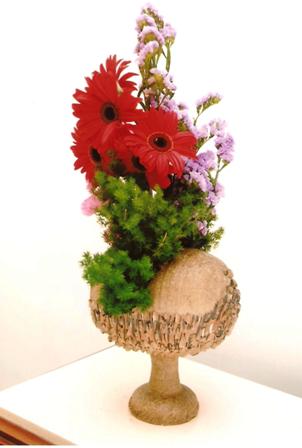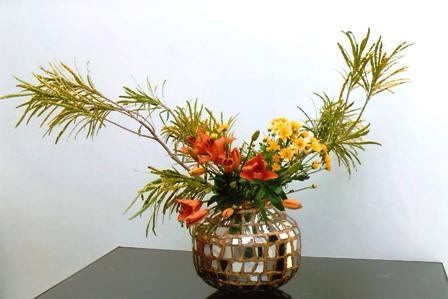Doraemon, appointed as the first ‘Anime Ambassador’ of Japan, one of the most popular animation characters is coming to Pune. He is a fictional robot, who travels back by time machine in the 21st century to aid a school boy, Nobita who was fearful, did poorly in school and sports, and was often bullied by his friends. Doraemon can pull out from his fourth-dimensional pocket all kinds of wonderful gadgets and tools. Doraemon, The Anime Ambassador reflects everyday life and customs in Japan, and is a popular Japanese animation movie enjoyed by children and adults as well.
A beautiful trained classical singer who is studying Japanese language will introduce the songs of Japan. She has performed at various places. Her melodious singing will be a delightful experience. The spectators will surely enjoy the songs of Japan presented by her.
This event is jointly organized by Consulate General of Japan, Mumbai and Mombusho Scholars Association of India, Western Chapter on Friday, April 23, 2010 at Yashwantrao Chavan Auditorium, Pune which will certainly be an enjoyable one created in a Japanese environment for all the spectators. Please come and enjoy this wonderful program.
Schedule of the program is as follows:
Date: Friday, April 23, 2010
Time : 1500 Hrs ~ 2100 Hrs
● Screening of Doraemon 1500 Hrs ~ 1700 Hrs
● Japanese song 1900 Hrs ~ 2100 Hrs
Venue: Yashwantrao Chavan Auditorium, Near Karve Statue, Kothrud, Pune
Entry : Free and is on first come first basis.
Events of the Last Year
1) Sharaku
The Mumbai Festival Committee and the Consulate General of Japan, Mumbai have organized an Exhibition of ‘Sharaku Exhibition Interpreted by Japan’s Contemporary Artists’.
The exhibition will be held from Saturday, 24th January, 2009 to Friday, 30th January, 2009 from 11.00 a.m. to 7.00 p.m. P.L. Deshpande Art Gallery, (Near Siddhivinayak Temple), Prabhadevi, Mumbai.
Consul General Mr. Hirotsugu Hagiuda will inaugurate the Exhibition on Saturday, 24th January, 2009 at 11.00 a.m.
The exhibition takes its theme Toshusai Sharaku, an ukiyo-e artist from the Edo era known throughout Japan and the world for his bust portraits of kabuki actors and presents posters, paintings and three dimensional works by today’s artists as they freely interpret this foremost master of the ukiyo-e print. The exhibition experiments with the individual re-interpretations of Sharaku, an artist active in Edo (present day Tokyo) some two hundred years ago. The exhibition is made up of three sections : “Reproductions of Sharaku” , “Sharaku in Graphic Art”, and “Homage to Sharaku”.
 
2) 7th Third Eye Asian Film Festival
Date: 16th October 2008 to 23rd October 2008
Venue: Chavan Centre, Plaza Theatre
For details please inquire at the Consulate.
7 films made by Japanese Film Director Mr. Keisuke Kinoshita will be shown.
1. Morning for the OSONNE Family
2. Woman
3. A Record of Use
4. Karmen’s Pure love
5. Spring Dreams
6. The Scent of Incense
7. Twelve Pairs of Eyes
3) Japanese Film Festival
4) Ikebana
Ikebana (生け花 or いけばな, Ikebana? "arranged flower"),[1] is the Japanese art of flower arrangement, also known as kadō (華道, kadō?, the "way of flowers").
In contrast to the massing of blooms typical of flower arrangement in western countries, Japanese flower arrangement is based on the line of twigs and/or leaves,
filled in with a small number of blooms. The container is also a key element of the composition. The structure of a Japanese flower arrangement is based on a scalene
triangle delineated by three main points, usually twigs, considered in some schools to symbolize heaven, earth, and man.Ikebana, one of the traditional arts of Japan,
has been practiced for more than 600 years. It developed from the Buddhist ritual of offering flowers to the spirits of the dead. By the middle of the fifteenth century,
with the emergence of the first classical styles, Ikebana achieved the status of an art form independent of its religious origins, though it continued to retain strong symbolic
and philosophical overtones. The first teachers and students were priests and members of the nobility. However, as time passed, many different schools arose, styles changed,
and Ikebana came to be practiced at all levels of Japanese society.
 
Bonsai (Japanese: 盆栽, literally "potted plant") is the art of aesthetic miniaturization of trees by growing them in containers. Originating in Chinese penjing (Chinese: 盆景, "tray scenery"),
Japanese bonsai developed its localization of techniques and aesthetics after its introduction to Japan by imperial embassies returning from China in the ninth century. In Western culture,
the word "bonsai" is commonly used as an umbrella term for all miniature trees.
Sumi-e is a style of painting that is characteristically Asian, and has been practiced for well over a thousand years. Literally ink painting, it is an art form that strives to distill the essence of
an object or scene in the fewest possible strokes. A few carefully placed broad strokes that fade off abruptly, a few thin lines and a dot, and a bird is clearly called into being on the paper.
Origami (折り紙, origami?) (derived from "ori" meaning "to fold", and "kami", meaning paper, and changed to voiced sound "gami" according to Rendaku) is the ancient Japanese art of paper
folding. The goal of this art is to create a given result using geometric folds and crease patterns preferably without the use of gluing or cutting the paper medium. "Origami" refers to all types
of paper folding, even those of non-Asian origin.
Origami only uses a small number of different folds, but they can be combined in a variety of ways to make intricate designs. In general, these designs begin with a square sheet of paper whose
sides may be different colors. Contrary to most popular belief, traditional Japanese origami, which has been practiced since the Edo era (1603-1867), has often been less strict about these conventions,
sometimes cutting the paper during the creation of the design. |